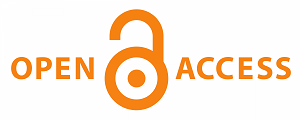
Applied Science Letters


To evaluate the lactation curve parameters of number of Iranian Holstein dairy cattle, the incomplete gamma function and computational methods of lactation persistency including PFIN,PCAN and PNLD has been used. Gamma function parameters estimated in four calving seasons(spring, summer, autumn, winter)by using of SAS statistical software.The results showed that the highest and the lowest amount a is related to cows which calve in summer and winter and the highest and the lowest amount b is related to cows which calve in spring and winter and the highest and the lowest amount c is related to cows which calve in spring and winter. And also the relations in computational methods of lactation persistency showed that the relations between second and third lactation period had the highest correlation in computational methods and the relations between first and third lactation period had the lowest correlation in computational methods.The correlation between lactation curve parameters indicated that correlation among a parameter and b and c is negative and inverse which states this fact the more milk production in early lactation is the lower slope toward production peak and the faster its reduction after lactation peak. Meanwhile, correlation between b and c parameters was positive which indicates that the faster lactation curve reaches its peak the faster reaches its end too.
Keyword:Lactation curve,incomplete gamma function,lactation persistency, Holstein cow
Cole,J.B and Vanraden, P.M. J.Dairy Sci.2006; 89:2722-2728.
Shanks, R. D., Berger, P. J, Freeman A. E, and Dickinson F. N. J. Dairy Sci. 1981; 64: 1852 – 1860.
Shimizu,H. Umrod,S. Jpn.J. Zootech. Sci. 1976; 47:733-738.
Wood, P. D. P. Anim. Prod., 1997; 11: 307 – 316.
Tomas, B. Prospects for improving lactational persistency. Dairy Science Group. Ag Research Ruakura Private Bag 3193. Hamilton, New Zealand. 1997; 319 – 339.
Yousefi-Golverdi A, Hafezian H, Chashnidel Y, Farhadi A. Afr. J.Biotechnol. 2012; 11: 2429-2435.
Dekkers, J. C. M, Jamrozik, J. Ten Hag, J. H. Schaeffer, L. R. and Weersink. A.Genetic and economic evaluation of persistency in dairy cattle proc. international work shop on genetic improvement of functional traits in cattle, 1996; 12: 97-100.
Solkner, J. Fuchs,W. Livet. Prod. Sci. 1987; 26: 305 – 319.
Keown, J. F., Everret. R. W, Empect N. B, and Wadell L. H. J. Dairy Sci.1986; 69: 769 – 781.
Cole, J. B., VanRaden, P. M. A Manual for Use ofBESTPRED: A Program for Estimation of Lactation Yield andPersistency Using Best Prediction, Available: http://www.aipl.arsusda.gov/software/bestpred/docs/Best
Prediction Manual.pdf.Accessed Nov. 1, 2007.
Poso, J. Interbull Bulletin, 2003; 27.
Tomas, B. Prospects for improving lactational persistency. Dairy Science Group. Ag Research Ruakura Private Bag 3193. Hamilton, NewZealand. 1997; 319 – 339.
Gengler, N., Keown, J. F and Van Vleck, L. D.Braz. J. Genet. 1995; 18: 237 – 243.
Vanderwerf, J. H. J and Schaeffer L. R. Random regression in animal breeding course notes. CGIL Guelph. June 1997; 25-28. Available http://www.agbu.une.au/kmeyer/course notes/html.
Jamrozik, J., Schaeffer, L. R, and Dekkers, J. C. M. J. Dairy Sci.1997; 80: 1217 – 1226.
Jamrozik, J., Jansen, G., Schaeffer, L. R. and Liu Z. Interbull Bulletin, 1998; 17: 62-64.
Torshizi, M.E., Aslamenejad, A.A., Nassiri, M.R., Farhangfar, H. South Afr. J. Anim. Sci.2011; 41:104- 115.


